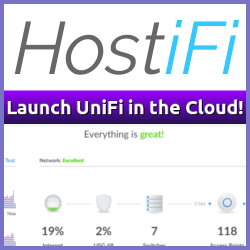For a tiny project, I need some help from anyone who has completed (successfully or not) the VCDX process.
_All I’m asking is that you provide me with a single line quote about the VCDX process, or the VCDX program itself. _
Please send any quotes to me on Twitter, either as a mention or as a DM, your choice. Once I have a handful of quotes available, they will be made public for others to use as well…
During some way overdue housekeeping in my HP Microserver-based “Homelab” today, I ran into a rather annoying issue that prevented me from starting one of my more important VMs; namely my home Domain Controller.
In short, I removed an old SSD drive that I’ve used for vFlash Read Cache (vFRC) testing and installed a new 1TB drive instead. Since I have a rather beefy work lab now, I need space more than speed at home, so this seemed like a good idea at the time.
When playing around with the Raspberry Pi Thin Client, I ran into an issue with the SSL certificates for the Citrix Receiver client. For some reason it didn’t want to play with the certificates installed on the server side, and popped the following error message:
**You have not chosen to trust "AddTrust External CA Root", the issuer of the server's security certificate.**
On Tuesday, December 3, 2013 VMware User Group Denmark arranged the Nordic VMUG Conference. The event itself can only be described as a mini-VMworld, with over 600 registered attendees, and a speaker list worthy of such a nick-name.
The opening keynote was held by Joe Baguley, the closing keynote was held by Chad Sakac. In between those two, you had the possibility to attend sessions held by Cormac Hogan, Mike Laverick, Frank Brix, Paudie O-Riordan, Frank Denneman, Mattias Sundling, David Davis and Duncan Epping.
Some time during the Podcasting for Cancer fundraiser period I somehow suggested that we should pair it with this years Movember.
Despite my wife and daughters strenuous protests, I signed up and went all in. By all in, I mean, all in. For the first time since I went to my then employers christmas party dressed as a woman, I shaved my whole face.
A while before VMworld Europe 2013 in Barcelona, I was lucky enough to be asked by John Arrasjid if I wanted to help out reviewing the new VCAP-DCD boot camp VMware Education has been working on. So far the VCAP Design Boot Camp has been tested in Spain, Singapore, and Malaysia, with over 300 participants so far.
In addition to this, a two part vBrownbag series covering the boot camp content was recorded and released:
Microsoft has launched Virtualization2, a program to educate VMware administrators on Hyper-V and the System Center suite of tools. In short, these arefree online training sessiosn on November 19th and 20th, that also comes with a voucher for their new Microsoft virtualization certification exam (74-409).
This comes in addition to their existing Microsoft Virtualization for VMware Professionals Jump Start training course.
 Eric Siebert has just announced the preliminary details for next years Top vBlog vote. This time around it is sponsored by Veeam, and there are even prizes to be won, not only the notorious fame and fortune that comes with being voted in the top percentile.
Eric Siebert has just announced the preliminary details for next years Top vBlog vote. This time around it is sponsored by Veeam, and there are even prizes to be won, not only the notorious fame and fortune that comes with being voted in the top percentile.
Thanks again to Eric for putting all of this together, there is a lot of work involved and the community really values the effort.
Yeah, I admit it. I want OS X Mavericks, and I want it now.
Unfortunately, it´s not available yet from Software Update. So instead of manually checking every 5 minutes or so, I decided to create a small bash script that does it for me.
It´s very, very simple, but I think it does the job:
First off, pop into Terminal and get root access:
h0bbel::h0bair { ~ }-> sudo su - For the first time since 2010 I will actually be physically attending VMworld Europe! I fly over from the very cold, rainy and generally very autumny Norway to sunny Barcelona on Sunday the 13th.
For the first time since 2010 I will actually be physically attending VMworld Europe! I fly over from the very cold, rainy and generally very autumny Norway to sunny Barcelona on Sunday the 13th.
Based on my past experience from VMworld in Copenhagen, I have decided to go easy on the session scheduling and not fill my calendar to the brim.
Sure, the sessions provide insane amounts of useful content, but for me the main reason to attend VMworld is to physically meet up and talk to a lot of the people I usually spend a lot of time communicating with. The social aspect, also called the hallway track, is to me the most valuable aspect of attending. After all, the sessions are recorded and available post-conference anyway.
About
vNinja.net is the online hub of Christian Mohn and Stine Elise Larsen.
The site primarily focuses on IT architecture and data center technologies, with a strong emphasis on virtualization and related topics.While the main content revolves around these areas, you'll also find a range of other subjects covered from time to time, reflecting the interests of authors.

